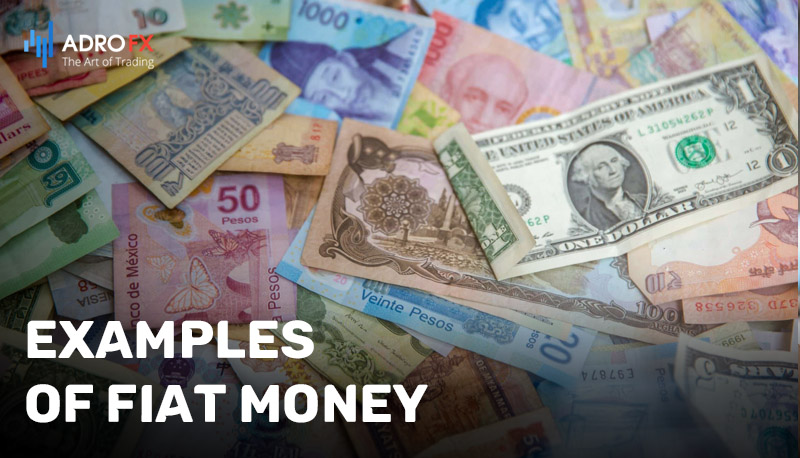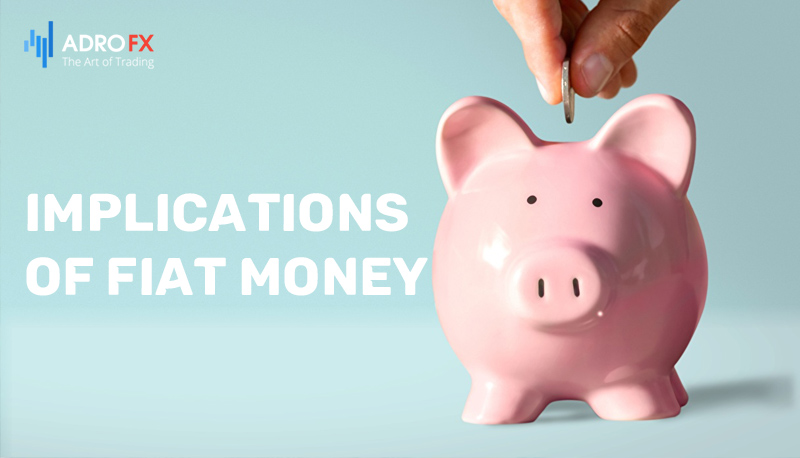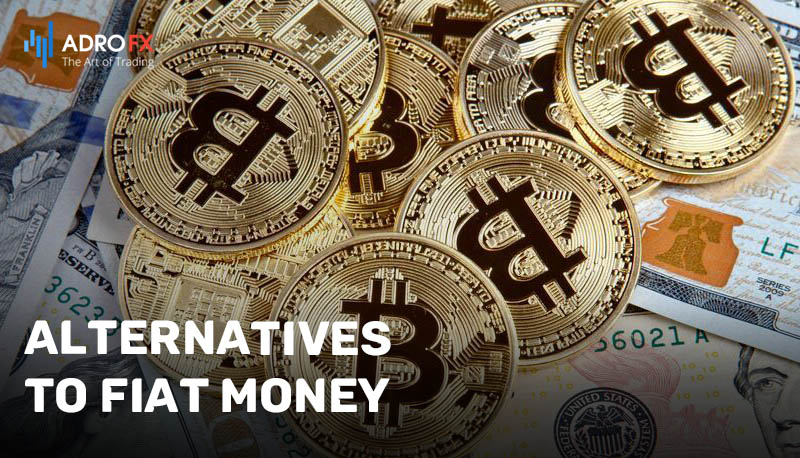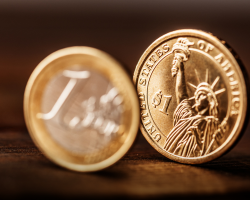Fiat Money: Definition, Examples, and Its Role in Modern Economies

In the complex world of finance and economics, fiat money plays a central role as the lifeblood of modern economies. It is the currency we use every day, the medium of exchange that fuels economic transactions, and the foundation upon which financial systems are built. But what exactly is fiat money, and how does it differ from other forms of currency?
In this article, we delve deeper into the concept of fiat money, exploring its origins, functions, advantages, and challenges. By understanding the fundamentals of fiat currency, we can gain valuable insights into the intricate workings of our economic systems and the impact they have on our daily lives.
Definition of Fiat Money
Fiat money refers to a type of currency that is declared as legal tender by a government but lacks intrinsic value in and of itself. Unlike commodity-based money, such as gold or silver, fiat currency holds value primarily because it is universally accepted within a specific geographical area for the exchange of goods, services, and payment of debts. The value of fiat money is based on the trust and confidence placed in the government that issues it, as well as its wide acceptance among individuals, businesses, and financial institutions.

Examples of Fiat Money:
- United States Dollar (USD)
The US dollar is one of the most widely recognized fiat currencies in the world. It is issued by the Federal Reserve System, the central bank of the United States, and serves as the official currency within the country. The U.S. dollar is widely accepted both domestically and internationally, and its value is determined by various economic factors and market forces.
- Euro (EUR)
The euro is the official currency of the Eurozone, which consists of 19 European Union member states. It is issued by the European Central Bank and used by over 343 million people. The euro serves as a common medium of exchange within the Eurozone, simplifying cross-border transactions and promoting economic integration among member countries.
- Japanese Yen (JPY)
The yen is the national currency of Japan, issued by the Bank of Japan. It holds significant importance in global currency markets and serves as a key reserve currency. The yen plays a vital role in Japan's economy and is widely used in domestic transactions and international trade.
- British Pound Sterling (GBP)
The British pound, commonly referred to as the pound sterling, is the official currency of the United Kingdom. It is issued by the Bank of England and has a long-standing history as one of the world's major fiat currencies. The pound is widely accepted within the UK and is also used in some British territories and dependencies.
Origins of Fiat Money
Fiat money is a type of currency that is not backed by a physical commodity like gold or silver but rather derives its value from the government's declaration or decree. The term "fiat" comes from the Latin word meaning "let it be done" or "it shall be."
The origins of fiat money can be traced back to ancient times, but it became more prevalent in the modern era. Here's a brief overview of its historical development:
Ancient and Medieval Times: Early forms of fiat money can be seen in ancient China, where governments issued paper money as early as the 7th century. These currencies were initially backed by commodities such as silk, but over time their value relied on the government's authority. In medieval times, governments often debased or manipulated the value of coins, effectively turning them into fiat money.
- Colonial America
During the colonial period, various forms of fiat money were used in the American colonies. These included colonial script, which was a paper currency issued by colonial governments. The value of colonial script was not backed by any physical commodity but relied on the trust and confidence of the people.
- Emergence of Central Banks
The establishment of central banks in the 17th and 18th centuries marked a significant development in the evolution of fiat money. Central banks, such as the Bank of England (founded in 1694), had the authority to issue and regulate currency. The value of the currency issued by central banks was based on the trust in the bank's stability and the government's ability to maintain its value.
- Gold Standard and Transition to Fiat Money
In the 19th century, many countries adopted the gold standard, where the value of their currencies was directly linked to a fixed amount of gold. However, during World War I and the Great Depression, countries faced economic challenges and abandoned the gold standard. This transition led to the widespread adoption of fiat money systems, as governments needed more flexibility to manage their economies.
- Modern Fiat Money Systems
In the modern era, most countries operate on fiat money systems. Governments, through their central banks, have the authority to issue and regulate currency. The value of fiat money is based on factors such as economic stability, government policies, and the trust and confidence of the public.
It's important to note that the value of fiat money is based on trust and confidence in the issuing government. Governments strive to maintain stability and prevent excessive inflation or deflation to preserve the value of their currency.

Implications of Fiat Money in Today's Economic Landscape
The usage of fiat money in today's economic landscape has several implications. Fiat money is a currency that is not backed by a physical commodity like gold or silver but is instead declared as legal tender by the government. Here are some key implications of fiat money usage:
- Centralized Control
Fiat money gives governments and central banks significant control over the money supply and monetary policy. They can adjust interest rates, print money, and implement other monetary tools to manage the economy. This centralized control allows for flexibility in responding to economic conditions but also carries the risk of potential abuse if not managed carefully.
- Inflation and Price Stability
Fiat money systems are susceptible to inflation, which is the general rise in prices over time. Central banks influence inflation by controlling the money supply. They aim to maintain price stability, typically targeting a specific inflation rate. However, excessive money creation can lead to inflationary pressures, eroding the purchasing power of money.
- Trust and Confidence
Fiat money relies on trust and confidence in the issuing government and central bank. People accept and use fiat currency because they believe it has value and can be exchanged for goods and services. Maintaining trust is crucial for the stability and acceptance of fiat money.
- Exchange Rates and International Trade
Fiat currencies are used for international trade and are subject to exchange rate fluctuations. The relative strength or weakness of a currency can impact trade balances, competitiveness, and the flow of capital between countries. Exchange rate movements can have significant implications for exporters, importers, and the overall economy.
Advantages and Disadvantages of Fiat Money
Advantages of Fiat Money:
- Flexibility: Fiat money offers flexibility in monetary policy. Governments and central banks can adjust the money supply, interest rates, and other monetary tools to respond to changing economic conditions, such as recessions or inflationary pressures.
- Stability: Fiat money systems, when effectively managed, can provide price stability and mitigate extreme fluctuations in the value of money. Central banks can use monetary policy to target a specific inflation rate, helping to maintain a stable purchasing power over time.
- Universally Accepted: Fiat money is generally accepted as legal tender within a country, making it a widely recognized medium of exchange. Its acceptance is enforced by law, ensuring that it is usable for all transactions and debts.
- Confidence and Trust: Fiat money relies on the trust and confidence of the public in the issuing government and central bank. Established fiat currencies with a history of stability and strong institutions tend to inspire greater confidence, making them more readily accepted.
Disadvantages of Fiat Money:
- Inflation: Fiat money systems are vulnerable to inflation, which erodes the purchasing power of money over time. Excessive money creation, often driven by government deficits or central bank policies, can lead to inflationary pressures and diminish the value of savings.
- Centralized Control: Fiat money systems grant significant control over the money supply to governments and central banks. While this allows for flexibility, it also exposes the system to potential abuse or mismanagement. Inappropriate monetary policies or political influence can lead to economic instability or crises.
- Currency Devaluation: Fiat currencies can experience significant devaluation due to factors such as hyperinflation, economic mismanagement, or loss of confidence. This devaluation can harm the purchasing power of citizens, disrupt trade, and create economic uncertainty.
- Vulnerability to Counterfeiting and Fraud: Fiat money is susceptible to counterfeiting and fraudulent activities, which can undermine trust and confidence in the currency. Governments and central banks need to invest in robust security measures to prevent counterfeiting and maintain the integrity of the currency.
- Dependence on Financial Institutions: The use of fiat money often requires reliance on financial institutions for transactions and storage. This dependence can expose individuals to risks associated with bank failures, cybersecurity threats, and limitations on financial accessibility.

Alternatives to Fiat Money
Supporters of the gold standard argue that its reliance on a finite supply of gold puts a natural limit on currency inflation. The government cannot inflate the currency without acquiring more gold to back it up when people exchange the currency for the precious metal.
Critics of the gold standard contend that this limit on currency expansion is artificial and can result in deflation. While deflation may initially seem favorable for consumers due to lower prices on goods, it can have adverse effects as companies may be forced to reduce their workforce to compensate for the decline in revenue resulting from those lower prices.
Cryptocurrencies, such as Bitcoin, offer an alternative that is less susceptible to government manipulation. Given the widespread abandonment of the gold standard by world governments in the 20th century, it is unlikely that they will return to it en masse. Therefore, a potential path away from fiat currency could involve a market takeover by Bitcoin.
However, volatility poses a significant challenge. Bitcoin's value has experienced substantial fluctuations in recent years, with its price surging from under $800 to over $60,000 at various points in 2021, followed by sharp declines of more than $30,000 in just a few months. Such significant gains and drops within a short period are not suitable for a nation's currency, which necessitates greater stability.
Final Thoughts
Fiat money, as the backbone of modern economies, plays a critical role in facilitating economic transactions and serving as a medium of exchange. Its value is derived from the trust and confidence placed in the government and its wide acceptance among individuals, businesses, and financial institutions. While fiat money offers advantages such as flexibility in monetary policy, stability, and universal acceptance, it is not without its challenges.
In conclusion, fiat money continues to be the primary form of currency in modern economies, providing the foundation for economic activity. Understanding its definition, origins, implications, and challenges allows us to appreciate its role and significance in our daily lives. As the world evolves, it will be interesting to observe how the concept of money further transforms and adapts to meet the needs of a changing global economy.
About AdroFx
Established in 2018, AdroFx is known for its high technology and its ability to deliver high-quality brokerage services in more than 200 countries around the world. AdroFx makes every effort to keep its customers satisfied and to meet all the trading needs of any trader. With the five types of trading accounts, we have all it takes to fit any traders` needs and styles. The company provides access to 115+ trading instruments, including currencies, metals, stocks, and cryptocurrencies, which make it possible to make the most out of trading on the financial markets. Considering all the above, AdroFx is the perfect variant for anyone who doesn't settle for less than the best.










